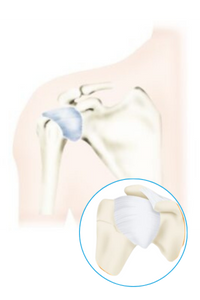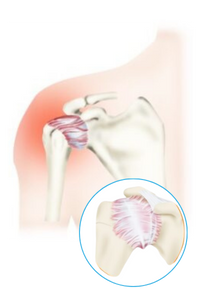‘Frozen' shoulder is a common condition where your shoulder capsule (a sleeve like structure around the ‘Ball and Socket') becomes thickened and inflamed limiting your movement in most directions and characterised by pain. This is most noticeable when trying to reach up, out to the side or getting your hand behind your back. The science regarding what causes frozen is not fully understood however, it is well recognised the condition can follow an injury and is more common in people with diabetes, women and/or between the ages of 40-60 but not exclusively.


Frozen shoulder is often considered in 3 overlapping stages:
Phase one
The 'freezing', painful phase: The first symptom is usually pain. The movement of your shoulder gradually reduces, while the pain increases. This phase is considered to occur for anywhere between 2-9 months before transitioning into phase two.
Phase two
The 'frozen', stiff phase: There is often less pain, but the stiffness and limitation in movement remain and can get worse. In this stage, once the pain has settled it is helpful to gently move your arm to reduce the chances of your arm becoming stiffer. This phase is considered to occur for anywhere between 4-12 months before transitioning into phase 3.
Phase three
The 'thawing', recovery phase: This may last for many months. The pain and stiffness gradually resolve and movement returns to normal, or near normal. This phase may last anywhere between 12-42 months. This entire process can take months to resolve. Commonly this takes between 18 months to 3 years to recover. Fortunately, this is a condition that predominantly gets better on its own; however there are things you can do to help the process.

